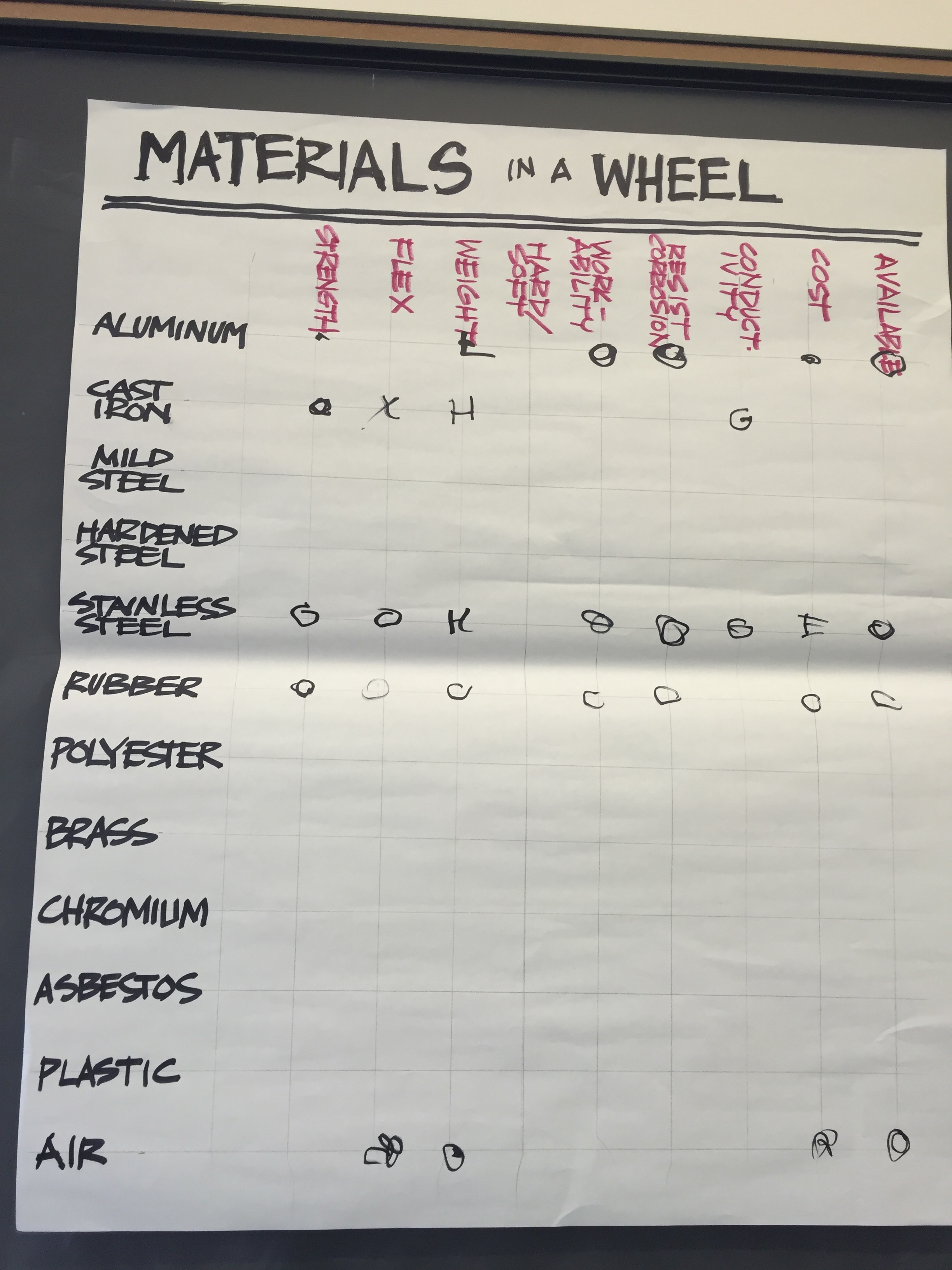Scribe: Hudson
Received greeting card from Rick Smith in response to thank-you card, with a special shout out to Parker for his Exeter shirt.
Began by recapping what was done on the 23rd in shop.
Electrical: Prepared to assemble plugs.
Transmission/Clutch: Installed Clutch and transmission in ’62.
Wheels: Finished front wheel and brake assembly of that wheel, put on tire (Littman noticed and fixed axle, which was backwards).
Bottom End: Installed pushrod on ’62, planning on finishing oil system in ’65. (Littman instructed them to look for the oil spurting out when the engine is running, an indication that the oil is circulating correctly).
Frame: Finding all parts of fender and screwing them on, couldn’t find one crucial piece, which Littman had found since that class and used to attach front fender. Littman also made another custom part, which was missing, and was precision made.
Fastners/Gaskets: Finished assembling oil reserve, formed ‘brain trust’ and huddled around ’65, received instruction of scraping off paint so electrical can ground properly.
Forks: Put throttle/grips/speedometers on handlebars, received all new cables.
Presentations Specifications
:: Shouldn’t be too technical, choose 1-2 technical things and explore the concept in 10-15 minutes the following week.
:: For example. Spokes might focus on cross-area section (how thick spokes ought to be), or clutch/transmission might focus on gears and friction pads.
Hopefully by the end of this week, we’ll have the motorcycle running!
4.28
Last session! Began by recapping what was done on the 26rd in shop.
(Hudson as scribe)
Top End: Only worked on ’62, sealed up their section, had to take off transmission cover and re-do spring of compact plate.
Electrical: Connected backlight to brake light switch, and screwed in headlight
Transmission/Clutch: Worked with Glenn on ’62 to fold over washer on shock absorber of clutch, installed clutch cable on ’62 and ’65. Lever was bent on ’65 so we had to bang it with a rubber mallet in a vice grip back in place.
Wheels: Put brake cable on, work on throttle trying to find correct part for front brake cable
Bottom End: Put engine in frame, speedometer cable got stuck so spent a while getting that in the right place. Actually put together engine on stand, realized it wouldn’t fit in the engine all together so had to take it apart and re-install it in pieces.
Frame: Worked on fender, looked for bunch of bolts in ‘box of hell.’
Fastners/Gaskets: Installed oil tank, mounted engine to frame (heavy-Jim did the lifting) scraped off paint from frame in places where engine bolts to frame so that electrical throughout bike=electrical pathway from where ignition coil is to engine, and paint is an insulator that gets in the way of that.
Littman: Adjusted the timing of engine, a process which involved setting the piston of the timing side to top dead center, making sure it swings the right amount of degrees when it’s supposed to. Suggested Fasteners team make sure each bolt is snug in place.
ZAMM Discussion
:: Went over motorcycle references, of which there were few in the last couple chapters.
:: Discusses welder, and author’s amazement at welder’s technical ability.
:: While Plato’s view on sophists is presented as a rebellion against them, in reality it is fairly similar.
Preston: Pointed out that rhetoric is about persuasion, i.e., winning an argument, whereas dialectic is about using conversation as a means of figuring out what is true.
Parker: Phaedrus feels betrayed at Plato’s view of dialectic, which was more just rhetoric.
Littman: Book came out during hippie period, when I was in college. Had a cousin who was a hippie, although ‘I didn’t partake.’
-Liked how Pirsig looked to ancient Greek philosophy to solve modern problems. Greeks got a fair amount right (four states of matter correspond to four ancient elements).
how do we like this book?
:: Is popular philosophy bad?
:: Is popular anything bad?
:: Does it dumb down ideas for the masses?
Littman likes style, where as soon as you’re about to get bored of quality discussion he switches back to motorcycle.
Hudson: Thinks Pirsig was high every time he sat down to write.
Littman: Wondered who Mary Jane was (in high school).


